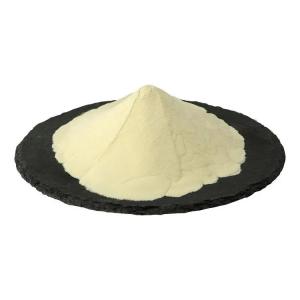Synthetic biology of the phospholipid synthesis pathway
Time:2025-08-20The strategies for synthetic biological reconstruction of phospholipid synthesis pathways mainly include the following aspects:
Optimizing the expression of key enzyme genes: There are multiple key enzymes in the phospholipid synthesis pathway. Overexpressing these key enzyme genes can improve the efficiency of phospholipid synthesis. For example, in Yarrowia lipolytica, overexpressing the genes encoding CDP-diglycerol synthase (CDS) and phospholipid methyltransferase (OPI3) can increase the total phospholipid content by 360% compared with the wild-type strain. In addition, overexpressing the genes encoding diacylglycerol kinase (DGK1) and glycerol kinase (GUT1) can promote phospholipid synthesis. Among them, DGK1 can convert diacylglycerol formed by triglyceride hydrolysis into phosphatidic acid, the main substrate for phospholipids, and GUT1 can improve the assimilation efficiency of glycerol by Yarrowia lipolytica.
Knocking out genes of competitive or degradation pathways: In Yarrowia lipolytica, knocking out the genes encoding phospholipid diglycerol acyltransferase LRO1 and phospholipase SPO14 can reduce the degradation of phospholipids or their flow to other competitive pathways. Among them, the phospholipid content of the strain lacking LRO1 decreases, while the phosphatidylcholine level of the strain PS07 lacking SPO14 increases nearly 6-fold compared with the wild-type when cultured on glucose, and the total phospholipid content increases to 390% of the wild-type.
Introducing heterologous genes: Heterologous genes that can participate in phospholipid synthesis or regulate the phospholipid synthesis pathway can be introduced from other organisms to expand the phospholipid synthesis pathway or improve synthesis efficiency. For example, introducing some genes capable of synthesizing special fatty acids into host cells can change the fatty acid composition of phospholipids, which may affect the functions and properties of phospholipids.
Optimizing metabolic network regulation: By overall regulating the intracellular metabolic network, more substances such as carbon sources can flow to the phospholipid synthesis pathway. Some transcription factors can be regulated. For example, in Yarrowia lipolytica, high levels of phosphatidic acid will cause the transcriptional regulator Opi1 to translocate to the nucleus, preventing it from binding to the transcription factor Ino2, which is an activator of many fatty acid and phospholipid biosynthesis genes. Therefore, the inhibition can be lifted by regulating related factors to promote phospholipid synthesis. In addition, synthetic biological methods can be used to construct artificial regulatory circuits, such as designing responsive promoters to automatically regulate the expression of phospholipid synthesis-related genes according to the intracellular phospholipid concentration or the concentration of other signal molecules.
Selecting appropriate chassis cells: Different microbial cells have different metabolic characteristics and genetic backgrounds. Selecting appropriate chassis cells is crucial for the reconstruction of phospholipid synthesis pathways. For example, Yarrowia lipolytica has a phospholipid synthesis pathway similar to that of higher eukaryotes and can utilize cheap carbon sources such as glycerol, making it a promising phospholipid-producing strain. In addition, bacteria such as Escherichia coli can also be used as chassis cells, and through genetic modification, they can be endowed with the ability to synthesize phospholipids or increase the yield of phospholipid synthesis.
Optimizing culture conditions: Culture conditions also have an important impact on phospholipid synthesis. By optimizing the composition of the medium, temperature, pH value, dissolved oxygen, and other conditions, the optimal environment for phospholipid synthesis can be provided. For example, in the process of phospholipid production by Yarrowia lipolytica, optimizing the carbon-nitrogen ratio of the medium can increase the yield of phospholipids.


 CN
CN





